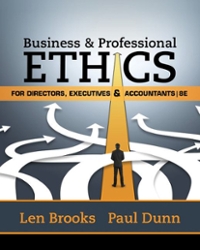The discount airline Jetsgo Corporation began operations in June 2002. Within two and a half years, it
Question:
The discount airline Jetsgo Corporation began operations in June 2002. Within two and a half years, it grew to become Canada’s third-largest airline, moving approximately 17,000 passengers per day on its fleet of twenty-nine airplanes, fifteen of which were company-owned Fokker F100s. With 1,200 employees, the company serviced twenty locations in Canada, a dozen in the Caribbean, and ten in the United States.
Jetsgo was a private company owned by Michel Leblanc. Leblanc had lived his life around airplanes. His father owned a flight school; he learned to fly at age sixteen. In his twenties, he was an aircraft salesman; in 1978, he co-owned an eleven-airplane forest-spraying business. From 1985 to 1990, he was a partner in Intair a regional airline in Quebec. In 1991, he and a new partner started Royal Aviation Inc., which he sold in 2001 for \($84\) million in stock to Canada 3000. Although he was subsequently sued by Canada 3000 for providing inaccurate financial information, the case was never tried because Canada 3000 went into bankruptcy protection in November 2001. In June 2002, he launched Jetsgo. On Friday March 11, 2005, just before the busy spring-break travel week, Jetsgo entered bankruptcy protection, stranding thousands of passengers who could not return home and annoying those who could not leave on their spring-break holiday.
Throughout its short life, Jetsgo was plagued with both financial and maintenance problems. Leblanc kept operating costs low by doing the following:
• Paying low wages
• Making pilots pay for their own training
• Leasing old aircraft
• Minimizing spare parts inventory by flying only two types of airplanes: the McDonald Douglas MD-83 and the Fokker F100
• Promoting ticket sales through the Internet Despite these cost saving moves, the company still had financial and maintenance problems. From 2002 to 2005, it filed a total of sixty incident reports with Transportation Canada. These included the following:
• Three months after it began operations, a plane had to make an emergency landing inToronto because of a hydraulic fuel leak.
• In January 2004, smoke filled the passenger cabin of one plane due to a hydraulic fuel leak.
• In April 2004, a plane made an emergency landing in Winnipeg because of a clogged engine oil filter.
• In December 2004, a plane heading toMexico had to return to Toronto after flames were seen coming out of an engine.
• In January 2005, a plane, landing in poor weather, slid off the runway in Calgary, hitting a runway sign before taking off again.
• In March 2005, a plane made an emergency landing in Columbia, South Carolina, because of incorrect oil pressure in an engine. It was the second such emergency landing for the plane due to oil pressures problems.
In November 2002, Transport Canada inspectors found twenty-three nonconformance items with the airline. In February 2005, Transportation Canada placed restrictions on Jetsgo and on March 8 said that operations would be suspended on April 9 if the maintenance problems were not fixed.
Three days later, on March 11, the company ceased operations........
Questions:-
1. For many organizations, bankruptcy protection is just another operational and financial strategy. Discuss the ethical aspects of intentionally remaining silent, collecting money, and then suddenly announcing that the company is bankrupt.
2. Do you accept that the little “white lie”
told to the pilots was justifiable?
3. Was it operationally wise for Jetsgo to keep the online reservation system open until the company officially declared bankruptcy? Was it an ethically correct or incorrect decision?
4. Should Leblanc have waited until the busy spring-break holiday period was over to then close down operations?
Step by Step Answer:

Business And Professional Ethics
ISBN: 9781337514460
8th Edition
Authors: Leonard J Brooks, Paul Dunn





